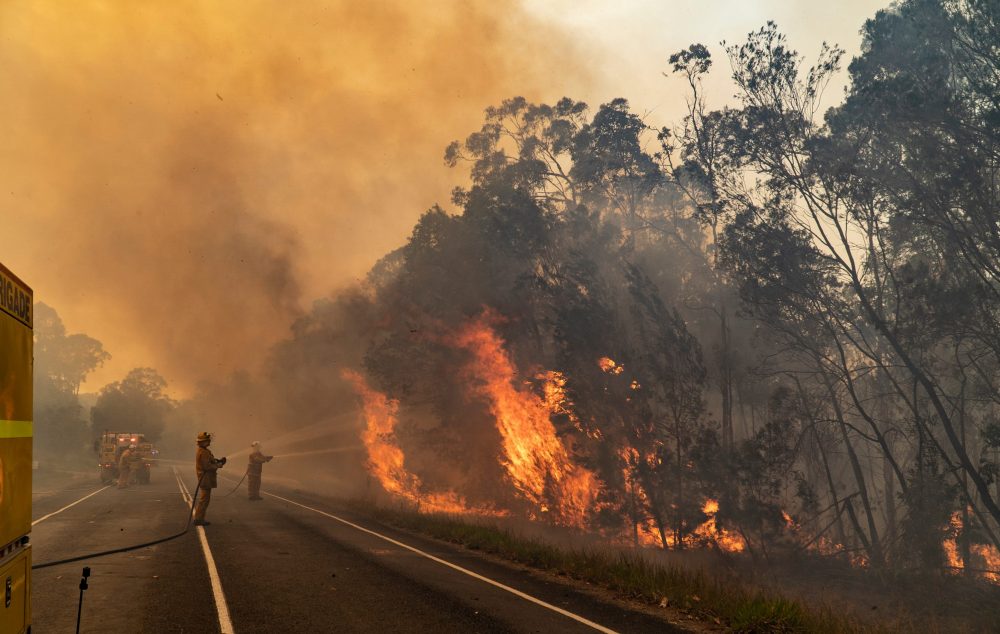Vital Tips for Bushfire Administration to Make Certain Fire Security

Understanding Bushfire Risk Degrees
Comprehending the varying degrees of bushfire threat is crucial for reliable preparation and preparation in mitigating prospective risks to lives and residential properties. Bushfire threat degrees are normally classified based upon aspects such as climate condition, fuel schedule, topography, and historic fire habits. By comprehending these danger communities, people and levels can proactively implement strategies to minimize susceptability and boost durability in the face of possible bushfire occasions.
The very first level of bushfire threat is low danger, where the probability of a bushfire taking place and causing considerable damage is very little. Risky levels indicate a considerable risk, with conditions conducive to fast fire spread and extreme fire actions.
Understanding these bushfire danger degrees makes it possible for stakeholders to customize their readiness and action activities accordingly, guaranteeing a efficient and positive method to bushfire administration.
Establishing a Defensible Space
Effective bushfire administration begins with developing a defensible space around properties to improve defense versus potential fire threats. A defensible area is a buffer zone that creates an obstacle in between a framework and the surrounding combustible plants. This area works as a vital line of defense, giving firefighters a secure area to run and assisting to minimize the danger of a fire infecting the home.
When developing a defensible space, it is vital to take into consideration the format of the home and the surrounding landscape. Clearing plant life, specifically extremely combustible plants, within a certain span of the residential property can aid prevent the rapid spread of fires. Additionally, preserving a well-irrigated area around the property can further enhance its defensibility.
Regular maintenance of the defensible space is critical to ensure its effectiveness. This consists of cutting overhanging branches, getting rid of dead plant life, and maintaining the location devoid of particles. By investing time and effort into creating and keeping a defensible area, homeowner can substantially improve their opportunities of safeguarding their homes and possessions during a bushfire.
Implementing Fire-Resistant Landscape Design
When creating landscapes to mitigate the risk of bushfires, including fireproof aspects is essential for boosting residential property defense and minimizing fire hazards. Implementing fire-resistant landscaping entails calculated preparation to produce a defensible area around frameworks. Start by picking fire-resistant plant species that are much less likely to spark and generate lower degrees of combustible materials. Select plants with high dampness content, reduced oil content, and marginal dead plants to decrease the risk of fire spread. Additionally, preserve ample spacing in between plants and keep them effectively trimmed to prevent fire from conveniently jumping in between plant life.

Producing an Emergency Emptying Plan
Creating a detailed emergency situation discharge strategy is vital for guaranteeing the safety and wellness of individuals throughout potential bushfire incidents (Bushfire Risk). An efficient emptying strategy ought to outline clear treatments to adhere to in case of a bushfire hazard, including designated evacuation courses, setting up points, and interaction methods
To start creating an emergency emptying plan, it is important to examine the specific dangers and vulnerabilities of your area. Determine several discharge courses that bring about safe areas far from the fire, taking into consideration aspects such as terrain, roadway availability, and possible hazards. Develop communication networks to alert residents of an upcoming discharge, making use of approaches such as alarms, text notifies, or door-to-door alerts.
On a regular basis evaluation and exercise the evacuation plan with all homeowners or neighborhood click over here now members to ensure every person recognizes their roles and responsibilities. Conduct drills to check the performance of the strategy and make any required changes. By having a well-prepared discharge strategy in area, you can enhance the possibilities of a organized and safe evacuation during a bushfire emergency situation.
Preserving Fire Safety Equipment
After developing a thorough emergency discharge prepare for bushfire incidents, it is necessary to prioritize the normal maintenance of fire security equipment to guarantee ideal performance and preparedness. Normal maintenance of fire safety and security equipment such as fire extinguishers, smoke alarm, smoke alarm, and lawn sprinkler systems is critical in guarding lives and property during a bushfire. When needed., performing regular inspections, screening, and maintenance of these devices by qualified specialists is crucial to guarantee they are in working order.
Fire extinguishers should be checked regularly for stress degrees, visible damage, and correct capability. By vigilantly keeping fire safety and security tools, check my site people can enhance their preparedness and action abilities in the occasion of a bushfire.
Conclusion
In conclusion, effective bushfire monitoring entails recognizing risk degrees, developing defensible rooms, implementing fire-resistant landscaping, developing emptying strategies, and maintaining fire security equipment. By complying with these important pointers, people can ensure much better fire defense and safety for their communities and buildings. It is necessary to prioritize aggressive steps to minimize the dangers connected with bushfires and to be planned for emergencies.
By comprehending the subtleties of bushfire danger degrees, go to this web-site establishing defensible areas, carrying out fire-resistant landscaping, developing extensive discharge plans, and ensuring the maintenance of fire safety equipment, communities and individuals can significantly boost their durability against the ravages of wildfires - BAL Report. These pointers are not only critical for safeguarding versus prompt fire threats but also for fostering lasting fire protection methods that can make a substantial distinction in the face of escalating bushfire dangers
Risky levels symbolize a substantial danger, with problems helpful to quick fire spread and severe fire behavior. Regular maintenance of fire security tools such as fire extinguishers, smoke detectors, fire alarm systems, and lawn sprinkler systems is critical in protecting lives and building during a bushfire.In conclusion, reliable bushfire administration involves comprehending threat degrees, producing defensible spaces, applying fire-resistant landscape design, creating emptying plans, and preserving fire safety tools.